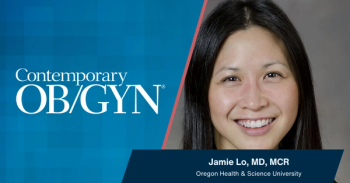
Should you offer your patients office-based gynecologic surgery?
The last decade has seen a proliferation of technologies for office-based surgery (OBS) that allow many procedures once performed in a hospital or ambulatory surgery center (ASC) to be safely incorporated into office practice. Diagnostic and operative hysteroscopy, cystoscopy, non-resectoscopic endometrial ablation, and hysteroscopic tubal occlusion are examples of procedures that have moved into the practitioner's office.
Key Points
The last decade has seen a proliferation of technologies for office-based surgery (OBS) that allow many procedures once performed in a hospital or ambulatory surgery center (ASC) to be safely incorporated into office practice. Diagnostic and operative hysteroscopy, cystoscopy, non-resectoscopic endometrial ablation, and hysteroscopic tubal occlusion are examples of procedures that have moved into the practitioner's office.
OBS procedures offer numerous advantages to patients, staff, and physicians. Patients benefit from easier scheduling, shorter facility stays, and potential reductions in total costs. Office staff members enjoy the opportunity to provide continuity of care, and physicians benefit from improved time management, enhanced reimbursement, more convenient scheduling, and greater control of perioperative care. However, residency programs offer scant training in OBS practice, so it is important that the physician's transition into the OBS setting does not compromise patients' safety or comfort.
Evolution of OBS in gynecology
The field of OBS continued to evolve when large-loop excision of the transformation zone was introduced in 1989, replacing traditional cone biopsies for the management of most cases of cervical intraepithelial neoplasia.2 In 1992, Gimpelson advocated office-based hysteroscopy for the evaluation of abnormal uterine bleeding, foreign bodies, infertility, and pregnancy wastage.3 With the introduction of small-diameter operative sheaths in the 1990s, Bettocchi and associates demonstrated that selected hysteroscopic polypectomies and myomectomies could be accomplished in an OBS setting, providing both excellent outcomes and patient satisfaction.4 (For a video of an in-office hysteroscopic myomectomy, please view at
The confluence of safe technology, patient and physician demand, and a favorable reimbursement structure will continue to encourage migration of various procedures into the OBS setting.
OBS, however, also illustrates how technology has outpaced residency training and legal and regulatory requirements. Residency programs today will need to meet the challenge of adequately preparing young physicians for the OBS environment. Additionally, oversight by various state health departments may be required to ensure that reasonable standards are met. Not until 2010 did the American College of Obstetricians and Gynecologists (ACOG) establish guidelines to ensure patient safety and comfort.8
Procedures suited to an office setting
Newsletter
Get the latest clinical updates, case studies, and expert commentary in obstetric and gynecologic care. Sign up now to stay informed.











